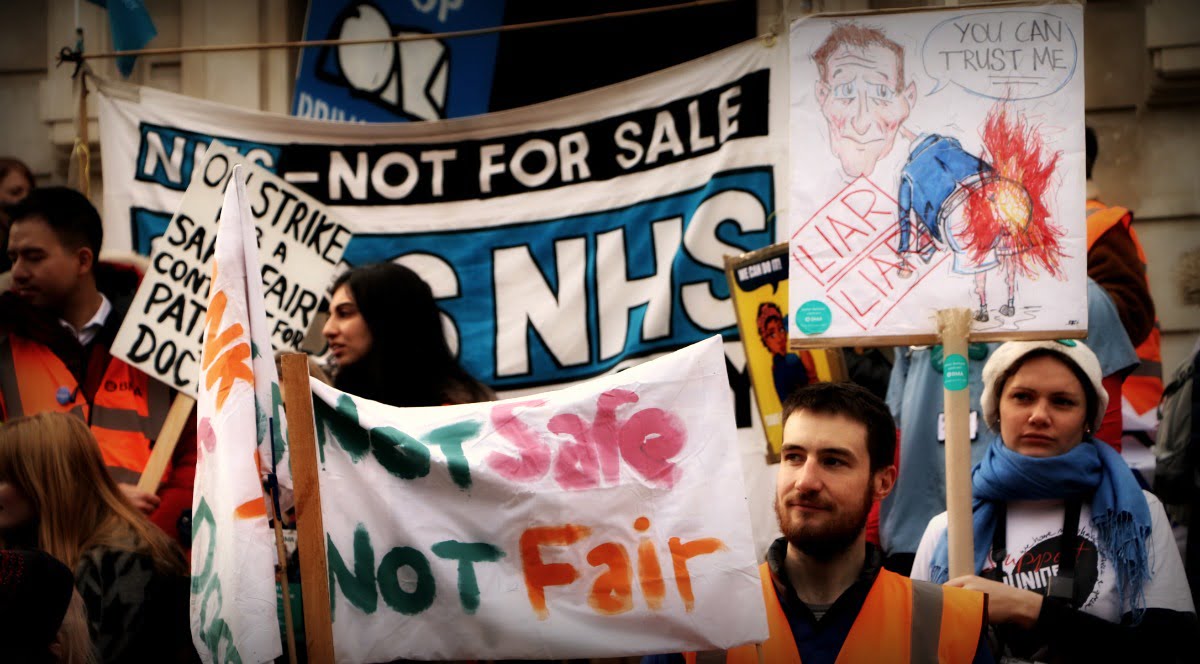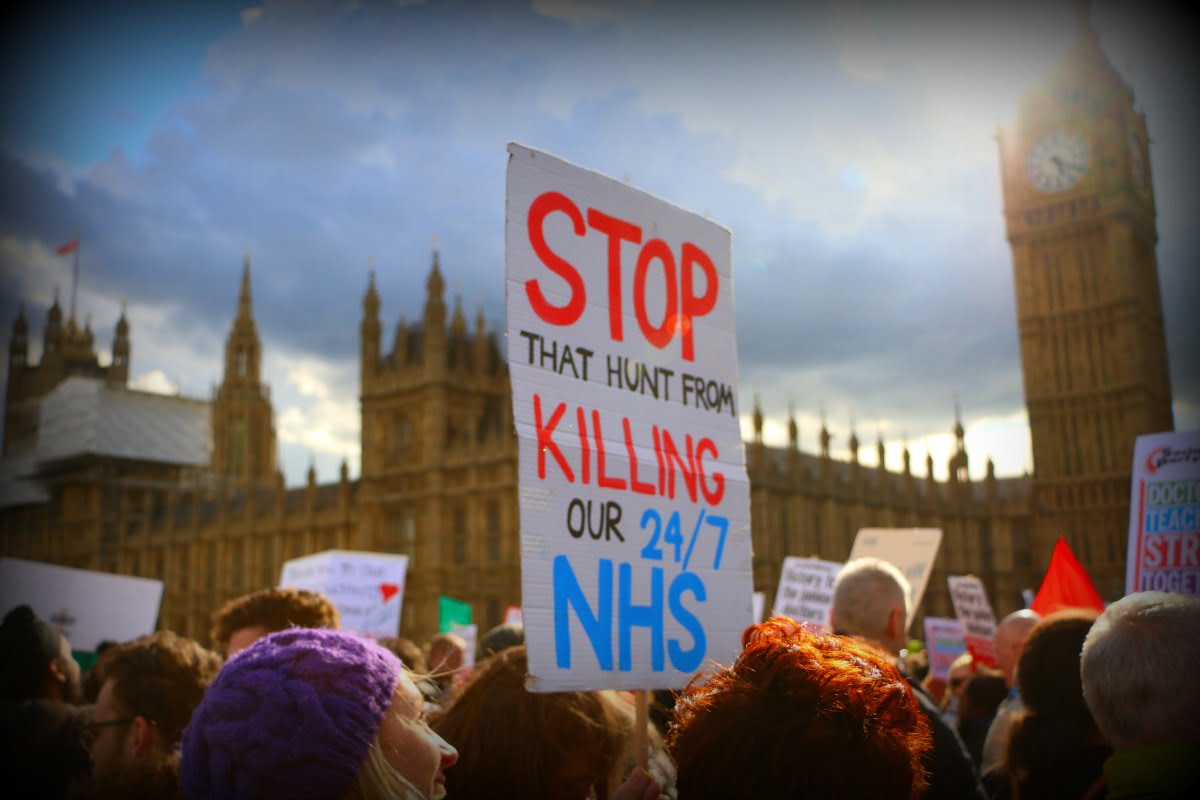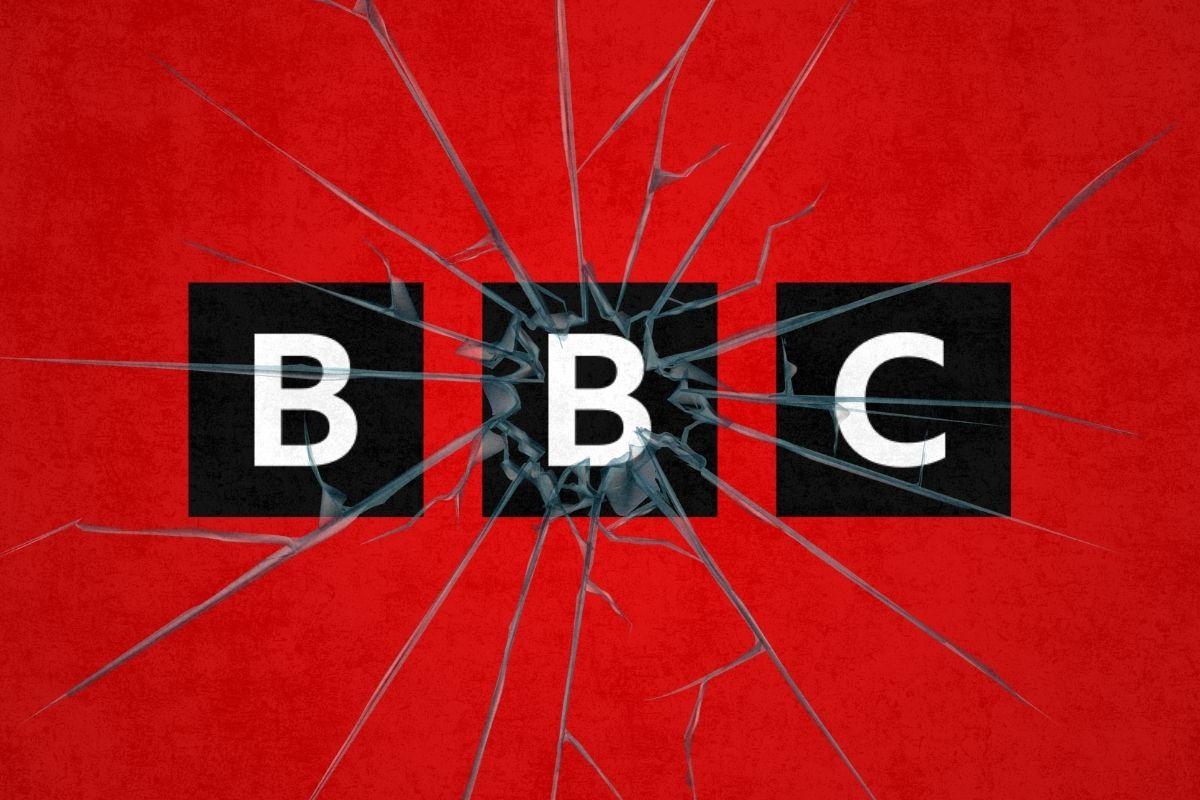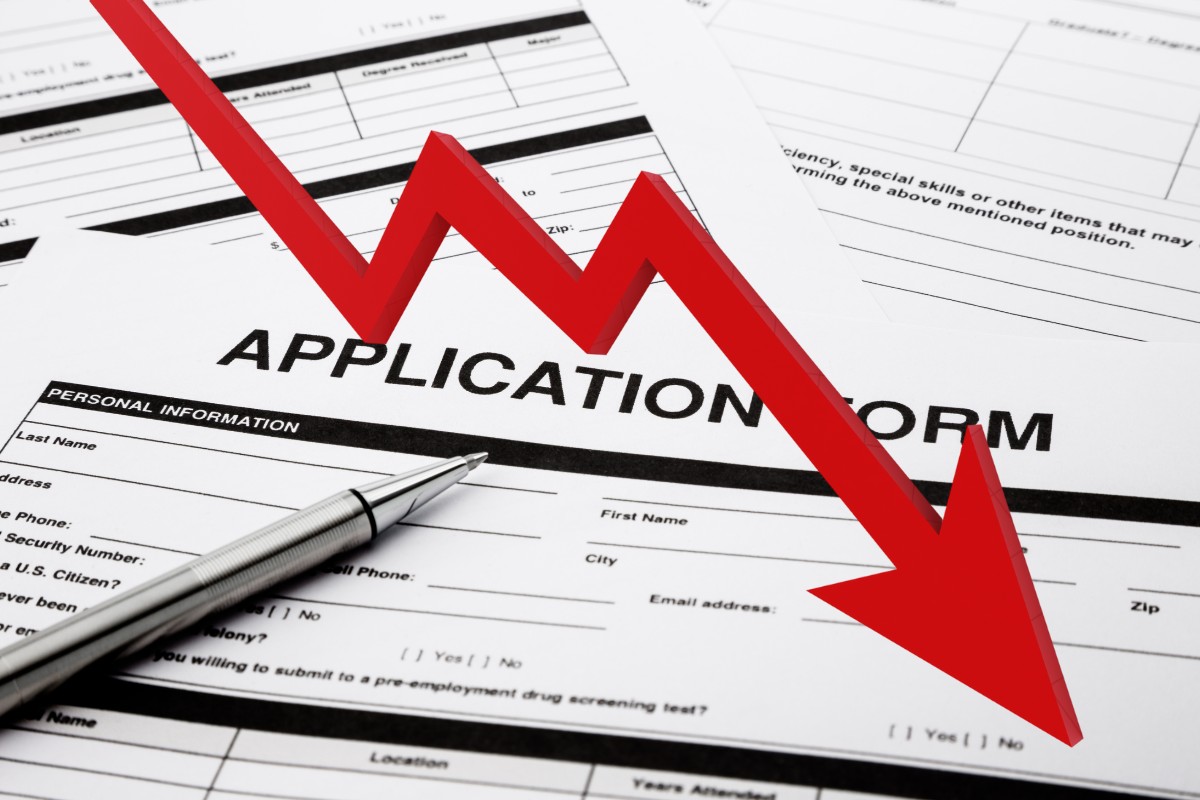Stephen Agnew interviews an NHS paramedic and uncovers the shocking truth about the extent of the crisis in our health service as a result of Tory cuts and under-funding.
The NHS is in crisis. The cuts to the NHS budget and dire working conditions for its staff are creating a toxic atmosphere. NHS workers are bearing the brunt of the failings of this Tory government. Both the British Medical Association (BMA) and the Royal College of Nurses (RCN) are openly recognising that services are in crisis.
There is one group of front-line NHS workers, however, that are only now beginning to make their voices clear on this issue: paramedics. With Tory cuts affecting other services, the backlog elsewhere means that hospitals are increasingly relying upon ambulances to cope with the extra burden.
Demand has grown for ambulance services by 35% since 2010. While the government announced that their budget has seen a 16% increase in since 2010 (National Audit Office, 2017), in reality inflation counts for 12% of this increase.
In real terms, per patient, therefore, there has been a massive cut to the ambulance budget which is beginning to buckle under the strain. Cuts that affect other departments also create a backlog of non-emergency problems that are contributing to an alarming rate of incidents that the ambulances are having to respond to.
On top of this, adjusting for inflation, a paramedic in 2010 was paid £500 a month more than 2018. An increasing workload and a cut in real wages has caused a massive loss in living standards for these workers.
Like most public sector workers, the official job description does little to describe all the excess tasks and duties that are required in order to keep the service going. Paramedics receive little training beyond their specific field of duties. As the first-line response, it is their responsibility to make quick diagnoses. They assess what treatment they can deliver before they can take patients to the next point of contact – usually hospitals.
I interviewed an NHS paramedic (“MA”) to discuss how the crisis is affecting their working life.
“Officially we are trained to deal with things between the actual emergency and the hospital. Unofficially however, we do everything: GP, midwife, social worker, mental health professional, and generally providing non-emergency care that would have been delivered elsewhere 10 years ago.
“All these things have been pushed onto the ambulance service due to cutbacks. I absolutely do not have adequate training for this job! We are trained in the stuff that goes to resus (critical emergency A&E), that’s all we are trained for, we are making educated guesses in non-emergency care.”
These added duties are being forced upon paramedics out of necessity, and the paramedics are struggling to cope. MA tells me how they try to observe best practices from doctors and nurses, yet they have received little training in areas of social work and mental health. They have little maternity training, and in mental health they are only trained in legal issues surrounding the Mental Health Act and Mental Capacity Act.
These added stresses are negatively affecting paramedics and are causing tremendous strain on the ambulance service.
“Things are grim, generally we do four 12 hour shifts in a row, so two day shifts and two night shifts, over four days. In these shifts we only really get a 45 minute break. I’ve heard of some ambulance services having 15 minutes, or none at all.
“Morale is very low, 2 ambulance services have been investigated for a culture of bullying (London and SouthWest-ed), and my trust definitely should be investigated.
“Due to lack of budgets, management has to bully the staff: work harder, work overtime, be more efficient, do a better job, despite the chronic lack of support. People who have taken time off for genuine illness, are pressured and threatened into coming back, it’s scary. Without this bullying, the whole thing would fall apart though. This is endemic across the ambulance services; it’s used to paper over the cracks and the bully culture goes all the way to the top.”
What is the feeling amongst paramedics, are they looking towards politics, are they becoming more radical?
“It’s very hit and miss, some are conservative minded, especially the older ones. They often pin the blame on people who call for an ambulance unnecessarily. Many of that crowd actually want a fee to be placed on calling the ambulance, which would deter people calling unnecessarily, but I really don’t like the sound of that.
“The other side of that, is a layer who are challenging this. Do you blame the people or do you blame the system? Do you blame the individual or do you blame the politicians? There are more progressive people in there. The common thing though is that everyone can see the problem, that is no doubt and seeing the NHS in decay can create a cynicism.”
What about the trade unions in your workplaces, are they helping workers’ situations? Are people engaging with them?
“The unions are always working on small negotiations. To be fair they are working towards improving paramedics lives, but it’s all just tit for tat. There is no drive, there is no desire for a real change. It feels like lawyers making deals, rather than actually taking a stand.
“They have lost the trust of a lot of working paramedics over the years. We feel they are out of touch, the phrase we use is: they run with the hare and hunt with the hounds. They’ll look after their own interests, which aren’t always the same as ours.”
A&E crisis
 The situation in the NHS as a whole is seen most visibly in A&E departments. The images of trolleys piling up, or the queues of patients waiting to be seen in triage doubling and tripling back on itself, shows the extent of the crisis.
The situation in the NHS as a whole is seen most visibly in A&E departments. The images of trolleys piling up, or the queues of patients waiting to be seen in triage doubling and tripling back on itself, shows the extent of the crisis.
It is not uncommon for doctors in A&E to ask paramedics to look after or monitor their patients just to lighten the load. Patients are sometimes held in ambulances outside A&E triage waiting for a space to become available.
When this is the case, the so-called turnaround time is extended. Paramedics can then be stuck in hospital for over half an hour. During this time they are effectively deemed ‘off the road’. A&E departments can only be efficient and effective if patients have a bed to go to. But the cuts to hospital and ward beds are making things impossible.
Waiting times for A&E departments during the winter months reached an unprecedented high of above 12 hours. In places it was estimated at 24. The governmental target was originally set at four hours. Clearly this has become a laughing stock, especially amongst paramedics themselves.
People in serious pain have been left sitting for 10 hours, without a diagnoses or any definitive treatment. Within that time nurses give observations and urgent pain relief can be administered, though there are usually more than six patients to a single nurse, and it’s not uncommon that ambulances crews have to assist.
“There have been some horror stories, like when all the ambulance crews are tied up with non-emergency care jobs, then you get a call about choking, or cardiac arrest, and the nearest crew is 20/30 mins away – what happens to that person? I heard that recently someone phoned the ambulance saying they were hard of breathing, and 45 mins later she had died and the ambulance were still on their way.
“You need two crews for a cardiac arrest and often there isn’t anyone else available, and you are just stood there having to explain to the family that there just aren’t enough paramedics. Sometimes we don’t even know which hospitals to drive patients to because we have been called so far away from our hub.
“I’ve been called to big motorway crashes, where there has been no ambulance crew around. I’ve driven an hour and half to make the numbers up. These are people’s lives at stake, people’s loved ones.”

Non-emergency care
Intermediate care and facilities have been hardest hit by the cuts to NHS budget, as MA explains:
“Many people are too sick to go home, but too well for hospital, intermediate places are vital but they are almost all gone. The demand on social care is too great. These patients get sent home again and in time they went up back in A&E.
“The system is a mess. Because they are getting more non-emergency calls behind them from A&E and from acute care wards they are having to discharge patients unsafety. There should be intermediate care beds, but they barely exist anymore. So we are used to picking up the pieces.”
In 2014, the NHS launched the non-emergency 111 call to replace telephone triage and advice services provided by NHS Direct, NHS24 and local GP out-of-hours services. Research shows they help, though it’s widely accepted that they are sending too many people to A&E. Patients are being sent via the ambulance service inappropriately in what’s been dubbed ‘defensive medicine’.
The 111 non emergency call centre recently stopped using paramedics and nurses in call centers, as their aren’t enough on the ground as is and it’s too expensive. They use a semi-automated system called pathways, only hiring people to work in the call centres. Obviously these workers are less trained, and much less paid than a healthcare professional.
As a method of reducing budget costs, the NHS has replaced the clinical training with an untrained minimum wage worker who operates the computer by following a question-tree. Although this was supposed to lighten the load on the ambulance service, in practice the 111 calls just end up overwhelming them. The 111 operators are often unable to act decisively and do what’s best for the system as a whole, or the NHS as a whole, when it’s safer just to call an ambulance.
“If you call about any ailment, they will always ask if you have any other pain, if you mention any chest pain, they automatically call the ambulance. We then rush out there expecting a cardiac arrest when on arrival when we ask them how long they have had the chest pain some say, ‘Ohh maybe 10 years’. It’s a laughing stock. It creates a boy who cried wolf situation.
“We can’t just refer everyone. There physically aren’t enough beds. Obviously we’d love to do a full scan for every patient every day but the system can’t handle it. ‘111’ have to just protect themselves for their own liability, their priority is making sure that they stay out of the media and such like.
“So therefore the system can’t apply human common sense. It’s all a money saving scheme, due to lack of budgets. Same old story.”
The future of the NHS
 In an effort to eliminate the inefficiency of smaller independent trusts, the NHS is looking towards a new model of Accountable Care Organisations (ACOS). The NHS as a whole is divided up into these ACOs in order for more large scale contracts to be sold.
In an effort to eliminate the inefficiency of smaller independent trusts, the NHS is looking towards a new model of Accountable Care Organisations (ACOS). The NHS as a whole is divided up into these ACOs in order for more large scale contracts to be sold.
All the healthcare services in one area, can be contracted in one go. These areas are called footprints. In the UK they have identified 46 areas/footprints e.g. Northumberland. It’s understood that this is softening the ground for privatisation of the NHS, as these all-encompassing contracts can be sold to private companies.
People are rightly very suspicious of this new model. The adoption of a business-like mentality by NHS trusts, with massive downwards pressure on costs, coupled with severe lack of investment in staff and services, is pushing the service towards privatisation.
Years of chronic underfunding, and seven years of cuts, are taking their toll. The corporate-like treatment of staff, where morale and staff welfare is the bottom priority, is creating problems for staff retention and recruitment.
“We are just trying to manage day to day. The people at the top are trying to cut costs on budgets. It’s very similar to what happens in the private sector. Some Tory just decides what the right budget is for that area and we have to bend over backwards to make it work. We can only bend so far before our back breaks. I can’t trust what’s happening right now. This ACO style contract is what they have in America, and that could be our future.”
So if you could decide what is done to the NHS, what would you do?
“Democracy at every level – entirely democratic. Get the business-owners, parasites and managers out. Healthcare professionals know best, but we need the money and we need to get that from the wealthy. It’s the only way, or things could get worse.
“It’s us who genuinely understand the emergency services better than anyone. If we were allowed to reform the system, I bet we could keep 80% of people away and make the system so much more efficient.
“Then, most importantly, an end to privatisation. Nationalisation of all the NHS services and assets; a funding increase; and adequate care for staff and workers well-being”






